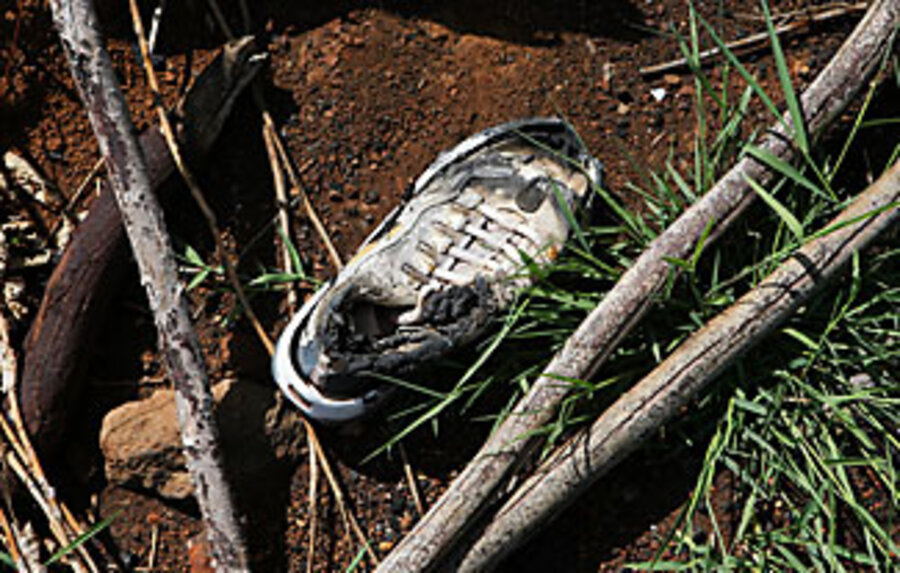Reporters on the Job
Loading...
• Powerful Remains: Crumbling mud walls, charred roof beams, scattered shoes and clothes, and a homemade wreath of grass made in the shape of a cross. That's all that was left of the Kiambaa Pentecostal Assemblies of God Church when staff writer Scott Baldauf and staff photographer Melanie Stetson Freeman visited while reporting for a story on efforts to heal Kenya's deep ethnic tensions after brutal violence followed its Dec. 27 election.
It was that spasm in postelection attacks that turned the church, a refuge for fleeing Kikuyu women and children, into a fiery grave.
Walking through its remains, five months after the gruesome attack, still gave Scott chills. The ruined school – where as many as 60 people died, most of them women and children – held "overtones of Rwanda's ethnic genocide, a well-planned campaign that killed far more people. That comparison was probably overplayed by the media," he says. Today, "it's the inhumanity that is more ghastly than the physical remains."
A few yards away from the church, Scott saw a once-comfortable home that was also razed to the ground. "A child's school notebook was open on the ground, weathered by the rains, and a prayer in Kiswahili was written in chalk on the plaster wall of the charred house that said, 'Let's sing Halleluja, it's the hand of God,' " he says.
Scott's friend from Nairobi, Felix, who offered to drive both him and Melanie to the church, was equally affected by what he saw. Scott recalls that Felix stared at the destruction and said he couldn't help but think about own wife and child back home. Scott says Felix told him, "I'm glad I've seen this, I think we all need to see this."
To see a photo slide show from Scott and Melanie's trip to Kenya, visit csmonitor.com.
– Michael B. Farrell
Middle East editor





